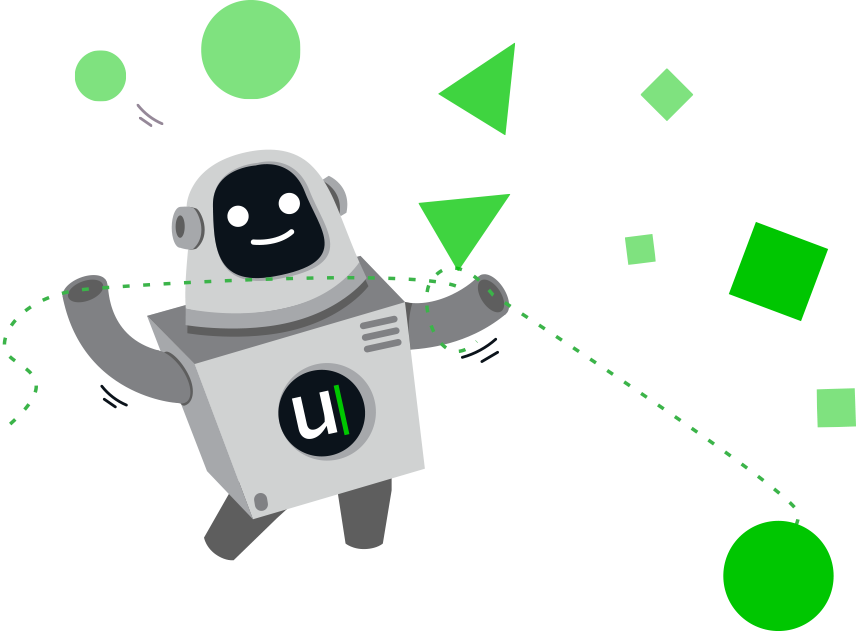Frequently asked questions
about automated content, the technology, United Robots and our services.

Automated content
What is robot journalism?
It's about automating routine reporting, at high volume, fast. Robot journalism is typically used when there's access to structured data sets, such as traffic incidents, sports results, and property sales.
Why do news publishers choose to use content automation?
- To expand their business: Leveraging the volume of robot content as a base to launch new sites, grow in new geographies, reach new audiences and drive revenue.
- To provide real time services: Serving customers with immediate alerts on news and events published directly to sites, apps or as push notifications.
- To provide personalised content: Reaching customers with the right message at the right time by segmenting on context, geography or behaviour.
- To free up reporter time: Automating what can be automated and free up time for the journalists to do the complex stuff.
What are some of the values content automation drives?
- Adding value to the journalistic offer
- Adding relevance to local readers
- Driving reader revenue / subscription sales
- Driving ad impressions
- Improving local coverage
- Providing an attractive top-of-funnel draw and retention tool in local communities
- Helping to cover news deserts
- Freeing up journalists' time
- Lifting community engagement
- Building reach in hyper local clusters
- Helping to launch new local sites fast
- Providing a quick and short route to setting up verticals
Do publishers use robots to replace reporters in the newsroom?
In our experience, cutting costs in the newsroom has rarely been the motivation behind automation among the media groups we collaborate with. In fact, they all have a strategy of improving and investing in local journalism in order to drive loyalty with local readers. Robots help them expand their hyper local coverage and eliminate news deserts.
What they do is free up journalists’ time by doing the routine, repetitive reporting that – really – journalists are overqualified to do. Robots also allow publishers to cover huge volumes of hyperlocal stories. Coverage which would be completely unfeasible to do manually. Like writing about 60,000 local football matches as is the case at Dutch local media group NDC.
Don’t robots use pretty repetitive language?
Yes, but that’s not the whole story. Robots should do the routine, repetitive reporting. Journalists do the human stories. And while our robots do volumes of routine stories, we build them for article and language variation and to each publisher’s editorial style guide.
Is there not a risk of robots making mistakes?
Actually, robots make fewer mistakes than humans. The technology United Robots use creates texts from structured data. If a particular fact is included in the data, it will be in the story. If it isn’t there, it won’t be in the text – and it certainly won’t be replaced with something else. Our publisher partners trust the robot content. The vast majority of it is published straight to their readers.
Don’t the robot written text need to be checked before publication?
Not the texts our robots write. The structure of the texts and rules around what angles the robot looks for are defined in detail by the newsroom in collaboration with us. Since the texts are based on structured quality data and the robots follow their predefined rules, the results are texts that are safe to publish automatically directly to end users.
Is it not technically difficult to deploy news automation?
Well, it is if you’re going to build your own robot. But publishers can use a partner like United Robots to build the robot for them. We then help the newsroom set the robot to write in line with its editorial style guide. And once that’s done, the automated content generation begins. We look after the robot, and the publisher gets their texts and images – sent directly to the CMS, sites or apps.
Shouldn’t we build our own robot to really be in control of the output?
Actually, it can be risky to rely on internal experts. Working with someone like United Robots removes that risk. Our robots continue to work irrespective of tech experts coming and going. And the control is with the publisher. We help newsrooms set the framework and rules that the robots work from.
Automated content services
What is required of the news publisher?
- To have an idea of how automated content can make a difference for your business, e g ask yourself:
- How can you leverage the volume of texts to fill gaps in your reporting map?
- How can you leverage the speed to set up new services?
- Can the consistency and predictability of this content support new revenue streams?
- And how can you use the robots’ data analysis to discover and generate new stories?
- Be prepared to experiment and test.
- Appoint a journalist or editor to work with United Robot's delivery team around tech and text feedback.
How do the services work?
United Robots offers content-as-a-service, which means we build the robots and send the automatically generated content they produce straight to your CMS, sites or apps. This is what we do:
- Identifying the story
For each story, our insight engine analyses data across multiple sources, sources which can be updated at any frequency. The better insights you can build and the more current they are, the more newsworthy the text. - Text design
Our tool is given a set of fixed parameters, such as text length, the inclusion of a headline and an intro, which data points to include and how many texts to generate. The algorithm is then set free to design the texts, dynamically creating text variation within the story scope. - Generating language
The text components our robots use were written by humans, and can be edited by humans. In other words, we set the robot to write to the editorial style guides of the newsrooms we work with.
How are the content services priced?
All our content services include an unlimited number of texts a month generated from the data source used. We price services based on two factors:
- Coverage selected (publisher specific). Defines the breadth of the scope:
- Real estate, traffic, weather: specified geographical area(s)
- Sports: leagues / games
- Company registrations: industries / company size etc
- Data source (content service specific). Defines the depth of the scope – the length and complexity of the generated texts. Each content service in each country/market has a specific data source. Different data sources carry different costs, and are charged separately from the content generated (coverage selected).
Our pricing model includes relative cost reductions when a publisher:
- extends the coverage selected within one content service,
- adds further content service(s).
The technology
What technology do you use?
Our robots use a combination of Artificial Intelligence (AI) and Natural Language Generation (NLG) to produce the texts from structured data sets. Our AI insight engine determines the story, and our NLG application then designs the texts – with possibly different angles depending on target audience.
How does your tech platform work?
The United Robots platform was designed to deliver to the key requirements of newsrooms working to journalistic standards:
- Predictability. The quality guarantee is built into the technology. With correct data + correct algorithm you always get a correct result. Equally, if something is missed, you can trace the error back, whether it’s a data point or a condition.
- Variation. The goal for editorial purposes is to generate a variety of texts. With our dynamic text design tool, we can generate dozens of different texts from the same set of data points.
- Control. High end publishers demand full control over the content created.
The company
Who started the company?
Back in 2015, Swedish local media group Mittmedia had too many sports matches to cover, and Sweden’s biggest sports database Everysport had more data than they knew what to do with. A question formed: Would it be possible to automatically write match reports based on this sports data? Well, yes it was! And our first text robot was born!
Mittmedia spent the winter feeling out readers and reporters about the automated stories. The response was positive and in May 2016 United Robots was registered as a company.

